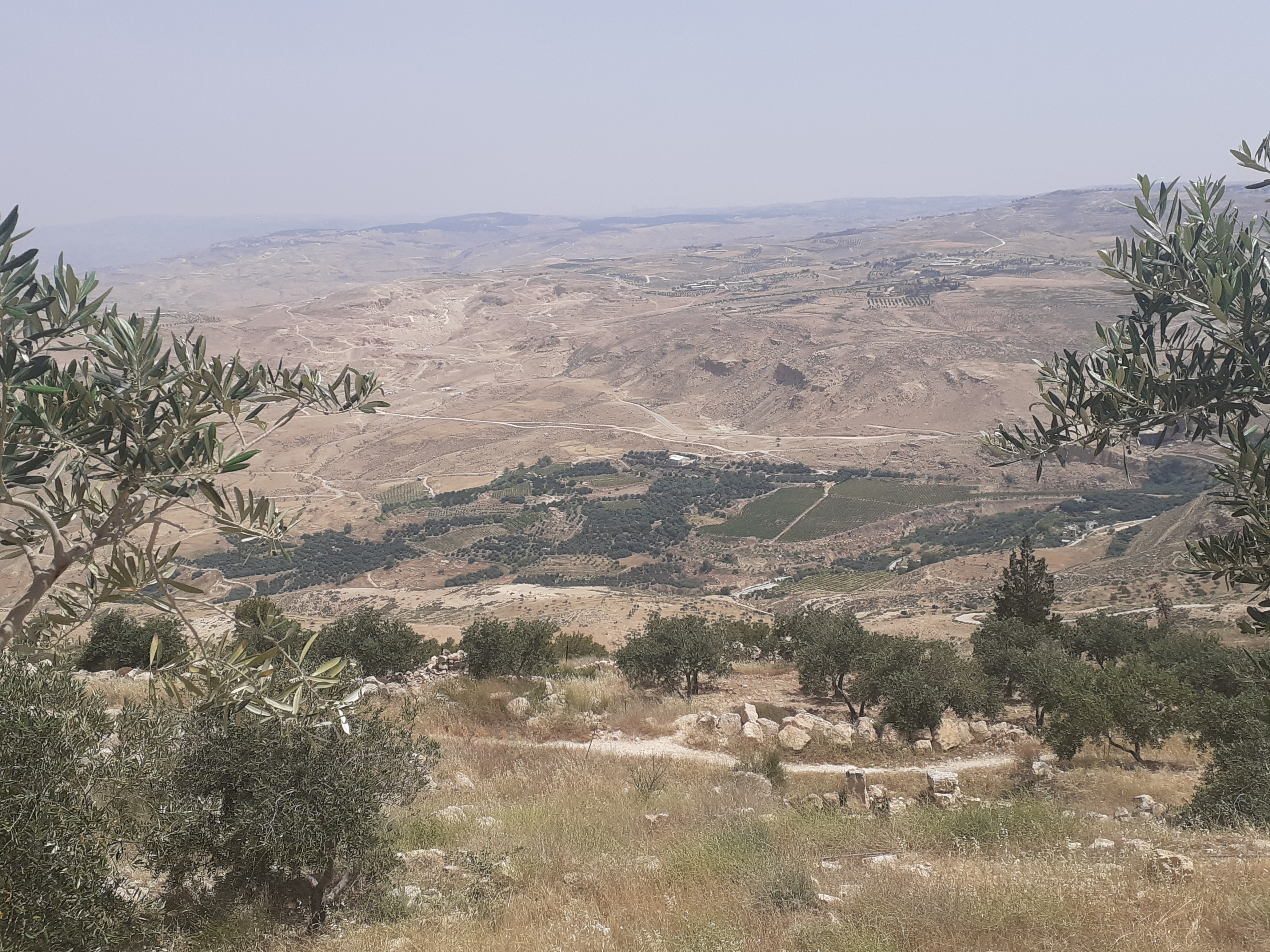Deut 34:1-4 Moses climbs Mt Nebo from the Plains of Moab (see Map 46), to the top of the pisgah (viewpoint) east of Jericho where the LORD shows him all the ‘promised land’:
the territory of Gilead as far north as Dan
the entire territory of Naphtali
the territory of Ephraim and Manassah
the territory of Judah west to the Mediterranean Sea
and the Jordan valley from Zoar to Jericho (the ‘City of Palms’).
Deut 34:5 Having caught a glimpse of the ‘promised land’, Moses dies on Mt Nebo in c.1406BC.

Moses Memorial Church on the summit of Mt Nebo (Tom Neys)
Deut 34:6-12 He is buried at the foot of Mt Nebo on the Plains of Moab opposite the town of Beth Peor (‘Temple of Peor’). Joshua - Moses’ assistant - is appointed in his place.
Mount Nebo
Mt Nebo (2680 feet / 817 m above sea level) is the highest summit in the northern Abarim Mountains, on the eastern side of the Dead Sea overlooking the Plains of Moab to the south-east of Jericho (see Map 46 & Numbers 27:12). In c.1406BC, Moses climbed Mt Nebo to look out across the ‘promised land’ of Canaan just before he died. He was then buried in an unmarked cave at the foot of the mountain. Some believe the apocryphal story that the ‘lost’ Ark of the Covenant was also hidden here by the prophet Jeremiah just before King Nebuchadnezzar of Babylon sacked Jerusalem in 587 BC (see 2 Maccabees 2:4-8).

View towards the Dead Sea from the summit of Mt Nebo
Today, visitors to Mt Nebo, in Jordan, can look out from the pisgah (the summit viewpoint) near the Brazen Serpent monument at Syagha, 6 miles / 10 km west of the old Roman town of Madaba, westwards across the Dead Sea and beyond towards Jerusalem and Bethlehem. They can enter the Franciscan Church of Mt Nebo, built on top of the 4 - 7th century AD remains of a series of early Christian churches (and a Byzantine monastery) built to commemorate the death and burial of Moses. Inside the church, a beautifully preserved mosaic floor from the old baptistry, dating from 531AD, shows pastoral and hunting scenes, with remarkably lifelike images of savanna wildlife including a zebra and an ostrich.

6th century mosaic in the Moses Memorial Church on Mt Nebo (Jerzy Strzelecki)
Less than a mile / 1 km to the east at Ayun Musa (the ‘Spring of Moses’), surrounded by eucalyptus trees, is the site of two 6th century churches (also with mosaic pavements) which were destroyed by an earthquake in 749AD.

Moses' Spring (Ayun Musa) from the summit of Mt Nebo
